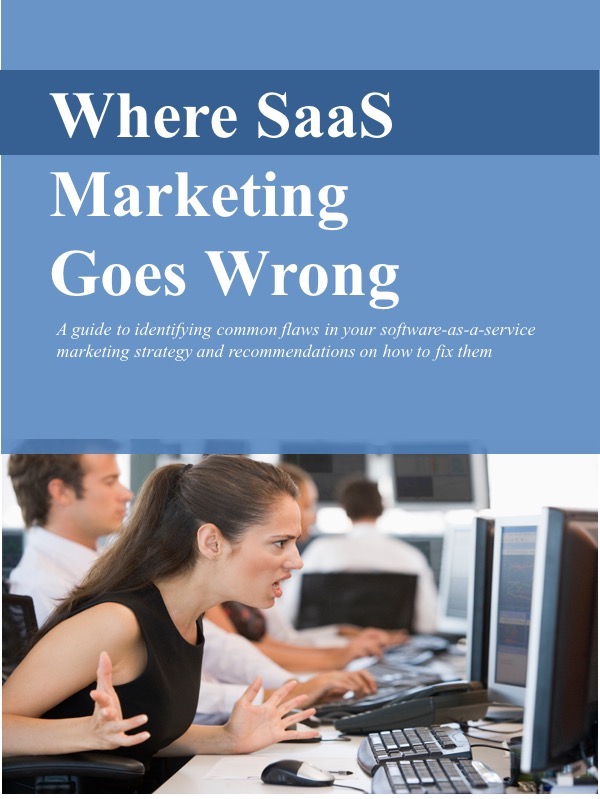SaaS Marketing Essentials: A Checklist
/The idea of capturing the essentials of software-as-a-service (SaaS) marketing in a short list probably sounds audacious, maybe even nutty. After all, I’ve been at this work for more than 15 years and been writing this newsletter for 12 years. I’d like to think I’ve picked up more knowledge than I can fit in a few bullet points!
Though I won’t to go into any detail, I do think it would be useful to identify key issues that SaaS marketers should be aware of. I won’t have all the answers, but at least I can help you ask the right questions.
Start with the value proposition
Before you even start to think about marketing campaigns, a website, branding or any other tactics, nail down your value proposition and messages. It should be crystal clear who you’re selling to, what problems you solve for them, why they should pay you for your product. Be able to capture all of that in a concise and compelling few paragraphs, and use those messages consistently.
(See “A marketing message is more than a bunch of words,” and “To deliver a consistent message, you need a script.”)
Measure to know what works and what doesn’t
Put in place a mechanism to see how your marketing programs are performing. You should know what individual campaigns are driving leads and new customers and which are worth the investment. Become intimately familiar with the concept of “Customer Acquisition Cost” and “Long-term Customer Value.” Marketing is likely to be one of your largest on-going expenses for a SaaS business: Don’t rely on guesswork or anecdotes to make decisions.
(See “Nothing simple about SaaS benchmark metrics.”)
Market more than just software
Don’t forget the “service” part of SaaS. You should market everything that you deliver with the subscription, not just the software. That includes help with implementation, training, and support. These elements are especially important to an audience that will often be adopting the product without support from their internal IT department. Buyers want to know how you’ll help them get up & running and get the most from their investment.
(See “Don’t forget the service part of SaaS,” and “Overcoming the fear of implementation.”)
Be patient with your prospects
Keep in mind that your prospective buyers have day jobs. They are not assigned full-time to evaluate and purchase software. They are handling that task while at the same time managing HR, accounting, marketing, finance, or some other responsibilities. They may well be looking at your website or sitting through a demo right now, but in ten minutes some other, more urgent priority can take their attention.
It’s essential that you develop a marketing program that keeps you in front of prospects over an extended period. When they’re ready and the need to fix whatever it is your product fixes comes back to the top of their priority list, you and your product will be top of mind.
(See “Are you giving up on your prospects too soon” and “Have your prospects gone missing, or just hibernating?”)
Pay attention to existing customers
Churn kills SaaS companies. Losing existing customers makes it difficult to recover your investment in acquiring those customers. You cannot afford to spend $100 to acquire a customer if they pay only $80 in subscription fees before they leave.
Pay special attention to getting new customers successfully through the first few months of their subscription. Effective implementation and training will get them off to a good start.
Beyond that, keep customers informed of new features, share best practices, and provide expert guidance. Marketing to your existing customers deserves as much attention as marketing to prospective customers.
(See “Remind customers why they’re paying you.”)
Avoid bad customers
I know, “Bad customers” sounds like an oxymoron. Especially if you’re a young company struggling to get traction, how can a customer that’s paying you money be a bad thing?
Here’s how. If the customer doesn’t really fit your target market, they’ll drag you away from a consistent and scalable SaaS business model. They’ll ask for additional features that may not be on your product development roadmap. They’ll ask for special support terms. They’ll ask for non-standard deployment efforts.
That’s not how SaaS works… or at least not how it works successfully. You need to develop, market, sell, and support a relatively standard solution. If you’re truly committed to building a SaaS business, resist the temptation to accommodate these customers that don’t fit.
(See “Bad customers can kill your SaaS business.”)
Is this everything there is to know about SaaS marketing? No, but it should give you a good start and keep you from making some big mistakes.
